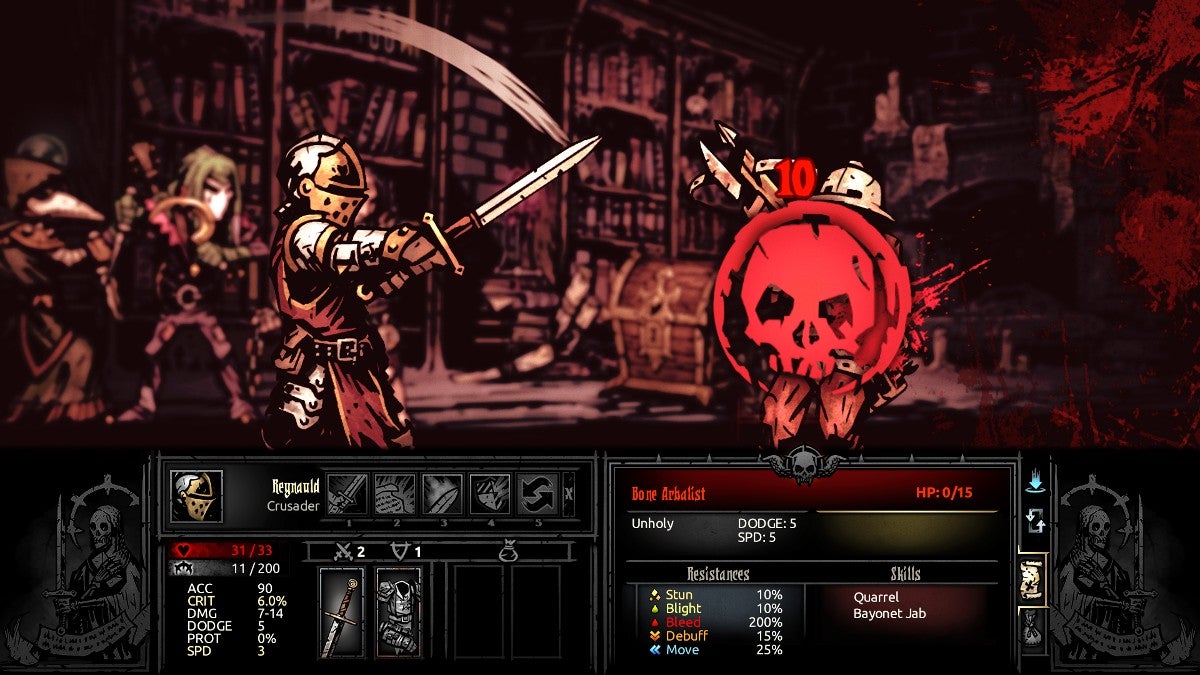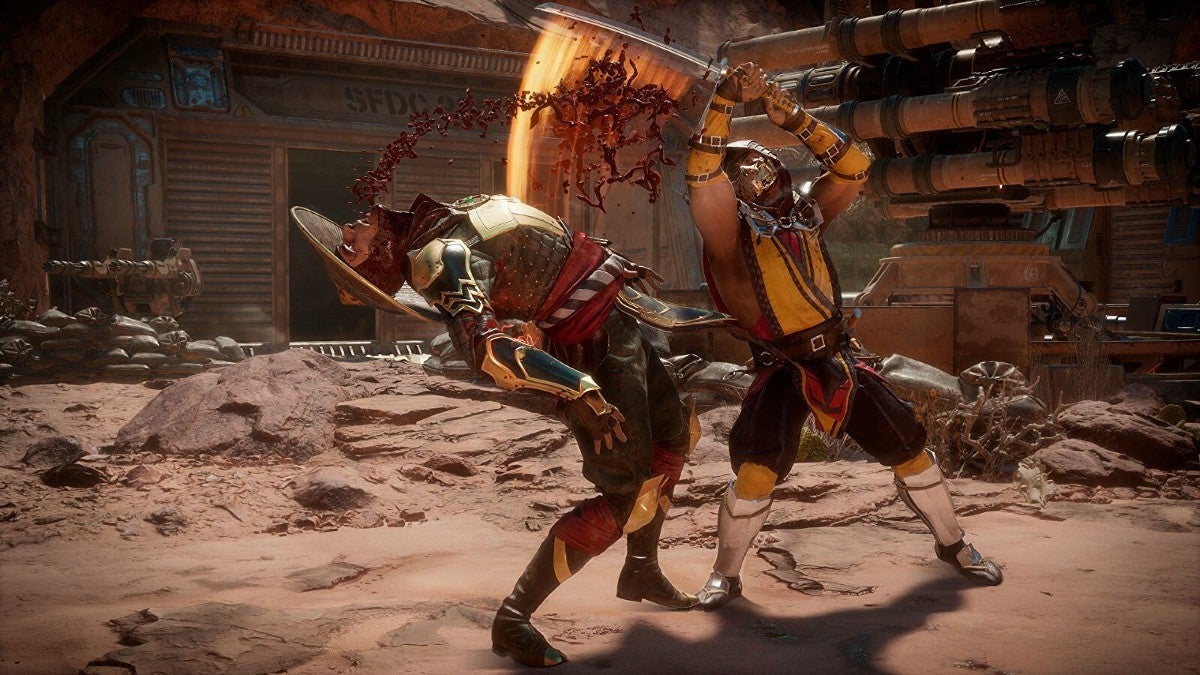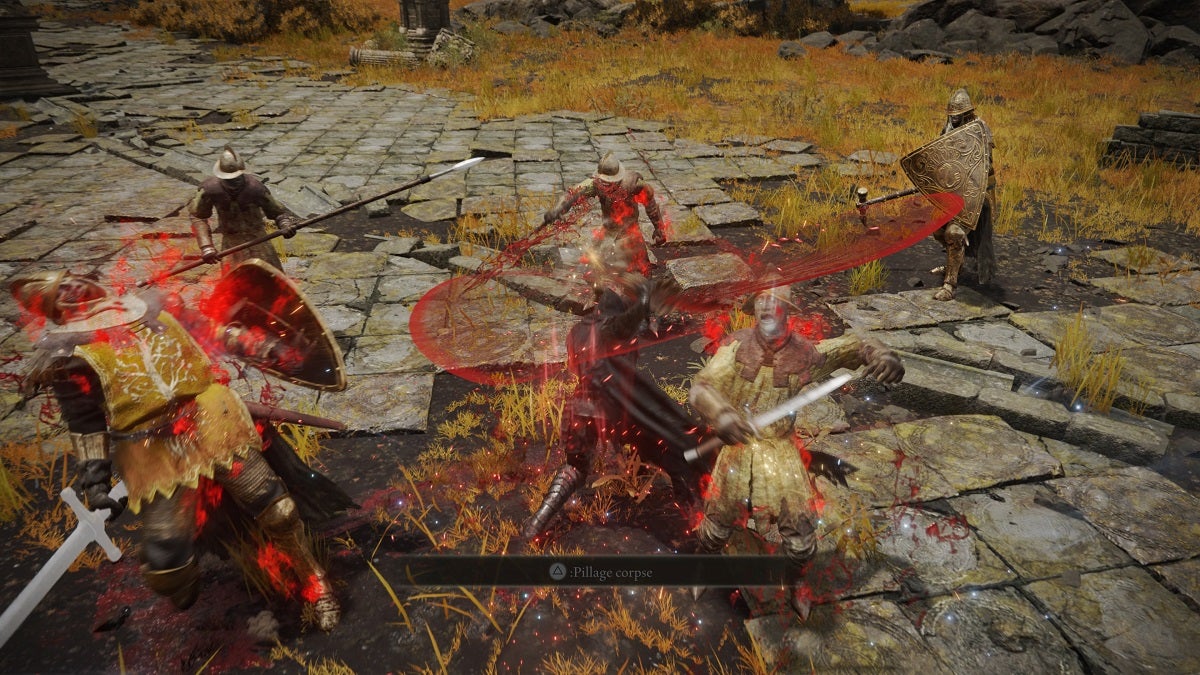![]() Key Takeaway
Key Takeaway
After decades of false accusations, the truth about violence in video games is revealed. Bloody conflicts in virtual worlds do not cause players to become dangerous in real life. In fact, the opposite is true. The simulated violence in video games can force people to work together to overcome AI enemies and foster goodwill, emotionally reward determination in overcoming huge challenges, as well as reduce the overall rate of real-world homicides.
Often, violence in video games gets blamed for the violent behavior of certain people. This is the result of connecting someone’s actions to events in games that involve conflict. However, in real-world violence, there’s a lot more at work.
Table Of Contents
The Definition of Violence

Before we get into why violence in video games is a good thing, we need to understand the nature of violence. Here’s the literal definition of “violence” from Oxford Learner’s Dictionaries:
Violent behavior that is intended to hurt or kill somebody.
Now, let’s break things down. For an act to be truly violent, there needs the intent to harm or kill. As in, you need to be committed to mentally, physically, or emotionally damaging another living being.
Furthermore, the target needs to be alive for such an act to count as violence. You can’t be violent against a rock or clump of dirt. Attacking such objects would count as being destructive—not violent.
To summarize, here are the two requirements for an act to be truly violent:
- Intent to harm or kill
- Targetting a living being
Intent to Harm or Kill
By the above definition, you cannot actually be violent at all in a video game. Instead, we should use terms like “simulated violence” in regard to conflicts in video games.
It is not usually possible for you to harm or kill a living being through gameplay alone. Specifically, you cannot physically harm or kill a living being in a video game. Everything that takes place in a game is not real—it’s just ones and zeros: coding, animation, and sound effects.
The closest that you can come is being verbally abusive across a voice chat system. And even then, this is not part of any game’s design; this is the actions of a person who was either already angry and is lashing out or someone who cannot handle losing and is choosing to be bitter and unpleasant.
However, you can block or ban people who act like this. These countermeasures have been in multiplayer games for a long time. The function to prevent verbal violence is part of video games and actively cuts down on negative interactions.
Targetting a Living Being
Like with the intent to harm or kill, you cannot target a living being in a video game. As, again, nothing in a video game is real. And targeting someone for verbal violence in multiplayer games does not count as the game being violent; that’s just someone choosing to be aggressive and is outside the functions of the video game.
To go a step further, if a verbal conflict in a multiplayer game were to continue into real life, this would take video games out of the equation entirely. At that point, it would be the same as if someone had an argument with another person over the phone.
The fact that the confrontation happened while playing a game would become irrelevant as the issue would not be because of the game but because of the actions of people.
Why People Think Simulated Violence in Video Games Is Bad

The problem began in the 1990s. Before the invention of the ESRB (Entertainment Software Ratings Board), there were no real restrictions on what could or could not be in a video game. This resulted in certain titles pushing the boundaries of what was acceptable in media at the time.
Mortal Kombat Kontroversy
One series that pushed the limits of the medium is the Mortal Kombat franchise. In the early 90s, the first few MK games had a lot more blood and gore than was previously seen in most other games of the time.
Much like with movies, this raised concerns about censorship. However, unlike with movies, there was nothing yet in place to control what could or could not be shown in a video game.
Long story short: the US government was worried enough about this that the ESRB was created to monitor and classify games based on their content. Mortal Kombat was not the sole reason for the creation of the ESRB (games like Doom also came under fire). However, it was certainly one of the most high-profile factors as the MK franchise was hugely successful and widespread.
Blind Activism
Despite the gaming industry doing its best to regulate the content in titles, this did not stop a few people from going on an all-out war against video games. However, these people were blaming video games for problems that were created elsewhere.
One of the loudest voices in this movement was Jack Thompson. Thompson has stated on record (during an interview on the news program 20/20 that aired on March 23, 2000) that “In every school shooting, we find that kids who pull the trigger are video gamers.” This was an outright lie.
It should also be mentioned that Thompson was very much against rap music and Howard Stern as well—for similar reasons. Ironically, Thompson was disbarred in 2007 for professional misconduct.
The Link Between School Shootings and Video Games
Following the tragedy of the Columbine High School massacre, many blamed video games for the actions of the shooters. It was found that the two offenders had an interest in games like Doom. The US government under the Clinton administration started an investigation into the matter.
The report of this investigation, released in 2004, found that only 12% of attackers in school shootings had an interest in “violent” video games. Comparatively, 24% of attackers were found to have an interest in “violent” books and 27% were found to have an interest in “violent” movies.
More telling is the show of interest in violence through the attackers’ own creations, such as their poems, essays, and journal entries. A whopping 37% of attackers were found to have an interest in violence almost exclusively from their own written content. This means that these individuals were drawing upon violent tendencies from factors in their lives and not from media.
How Simulating Violence in Video Games Helps People

There have been a huge number of studies on simulated violence in video games. And none of them have been able to prove simulated violence in games leads to real-world violence. In fact, the dozens of primary studies into this matter proved otherwise.
The results of experiments done showed that there is no behavioral difference following the playing of a “violent” video game. Tests were done on children and adults of different ages from different backgrounds.
Naturally aggressive people are more interested in violence. These people were attracted to simulated violence in video games due to their personal interests. The games did not influence people to be violent in real life.
Video Game Competition vs Simulated Violence
In 2011, a psychological study was conducted by Brock University in Ontario, Canada to determine the effects of completion and “violence” in video games. Put simply, this study found that competition drove players to be more aggressive than depictions of violence.
Two of the control games used were Fuel, a racing game, and Left 4 Dead 2, a cooperative zombie shooter. Although there is no blood and gore in Fuel, gamers who played it were found to be much more aggressive than Left 4 Dead 2 players.
Competition fuels aggression between players because you want to win and beat others to the finish line. You coming out on top is a direct result of you beating someone else. This leads to you wanting others to do poorly, which is aggressive and hostile thinking.
On the opposite side, despite Left 4 Dead 2 having way more blood and gore, players interacted in a much more positive way. Since the gameplay is cooperative, you are actively forced to help other players if you want to succeed.
Following gaming sessions, L4D2 players were much more friendly than Fuel players. The simulated violence in the former title actually made people less aggressive. Working together with others to fight a common foe raised social empathy, increased cooperative tactics, and generally reduced the stress levels of the subjects in the study.
The Emotional Benefits of Video Game Conflicts
You play video games to feel good. There is a challenge you need to meet. And, if you succeed, you are rewarded. Regardless of the genre of the game, this fact remains the same. It’s the core idea behind all gameplay in every video game.
Unlike real-world challenges, there is no real consequence to failing in a game. You can always try again. As such, the rewards for succeeding are much more powerful than the fear of failure.
And, the more intense the conflict, the more intense the reaction. For example, being locked in a life-or-death battle will trigger stronger emotions. This is especially true for harder combat-oriented games, like Elden Ring.
When you die at the hands of a boss, it feels bad. But when you get stronger and defeat them, it feels great! Violent confrontations in games force you to become better.
The more simulated violence is thrown at you, the harder you will work to overcome it. And, the harder you work to meet your goal, the better it will feel when you succeed.
The Decrease in Homicides
In 2014, a study from Villanova University in Pennsylvania, USA showed some unanticipated results. The researchers looked at violent crimes recorded in an FBI system and compared them to the release of “violent” video games.
Contrary to what was expected, homicides were less frequent following the release of games like those from the Grand Theft Auto and Call of Duty franchises. Potentially homicidal people were staying home to enjoy simulated violence instead of unleashing their wrath in real life.
This isn’t just in the modern day, either. Over 30 years of FBI records and game release data were looked at to come to the above conclusion. People with violent tendencies would rather play video games than harm or kill people.
This, again, proves that people are attracted to the kinds of content that speak to them. Video games do not cause people to be violent. However, the opposite is true.
Although the study focuses on homicides, the same trend is probable for other kinds of crimes. Video games are making the streets safer for everyone by giving dangerous people a safe outlet to purge their hatred.


